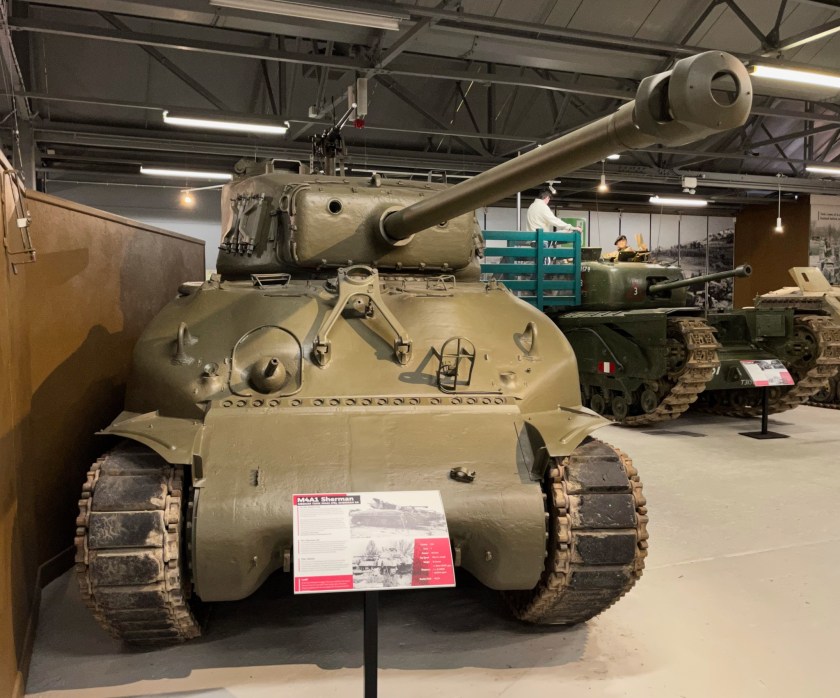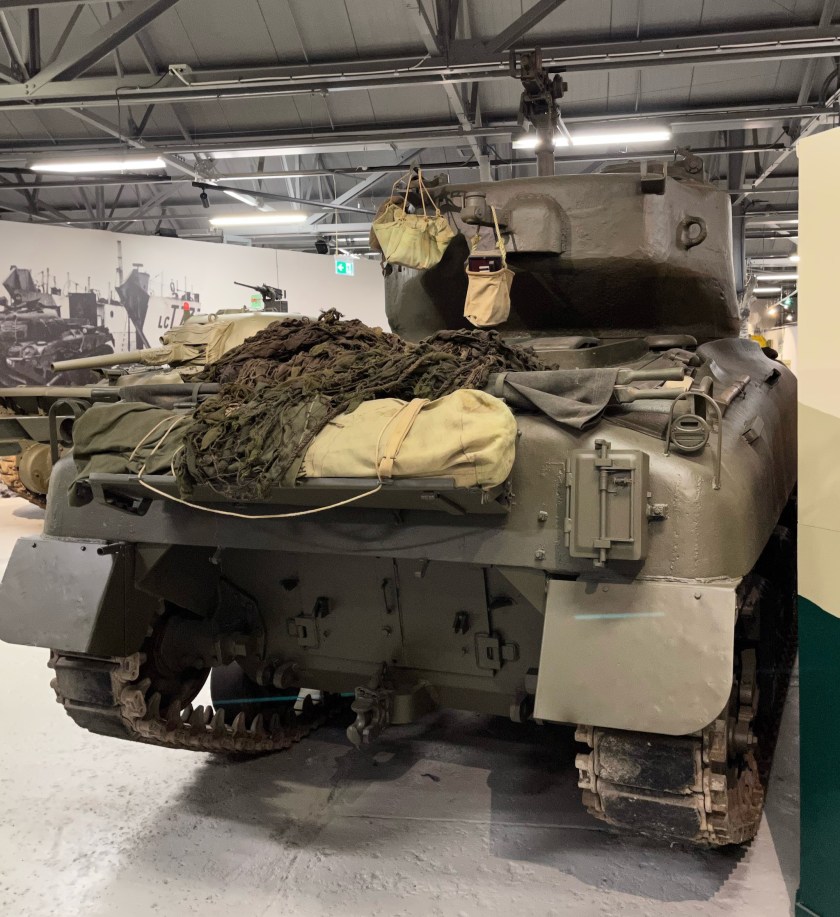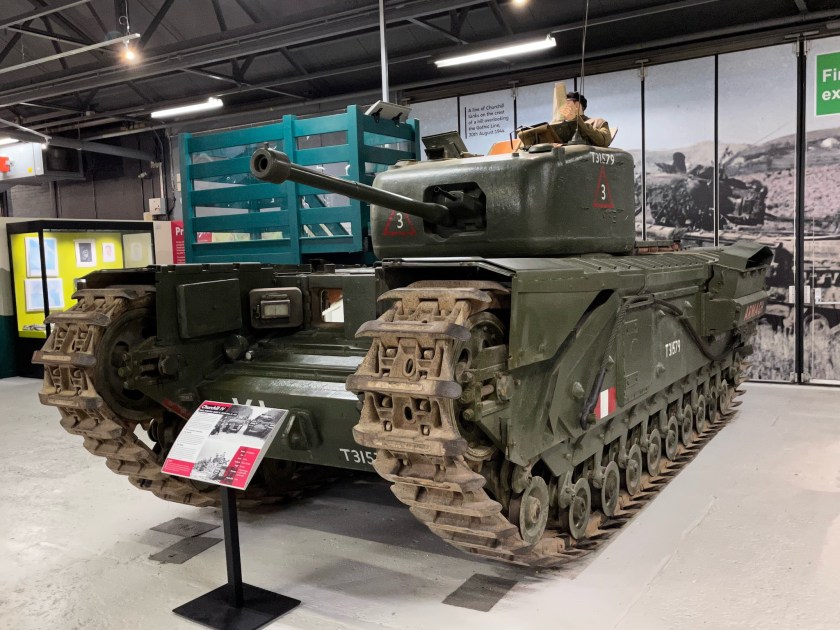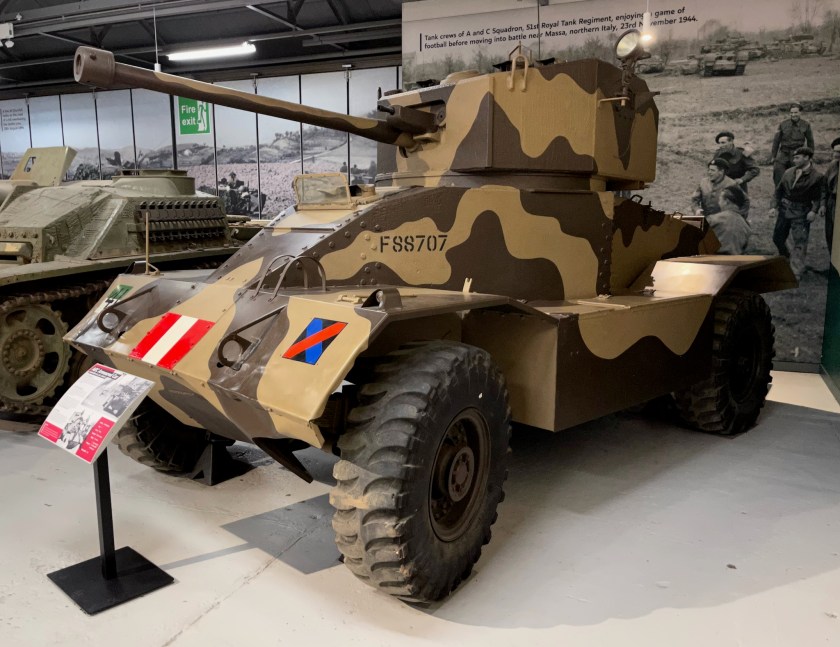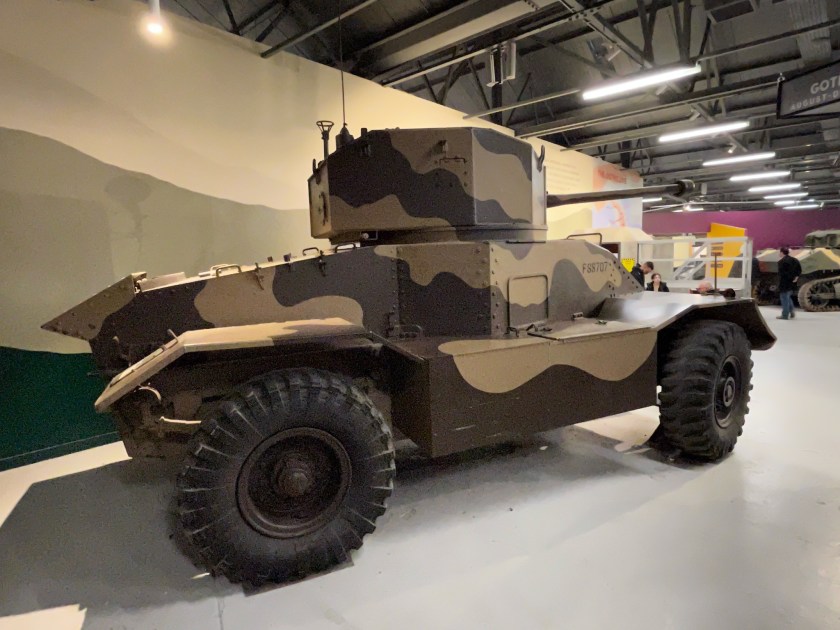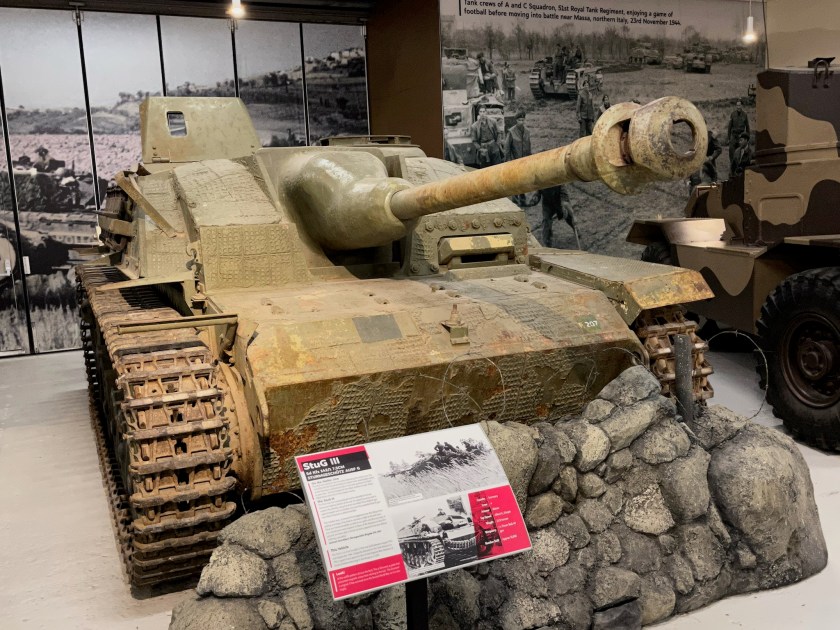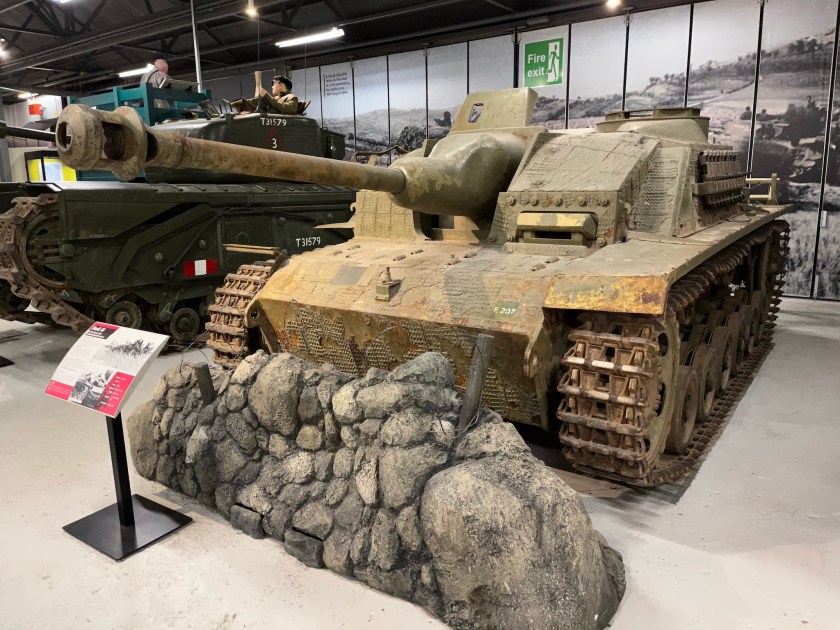The Royal Engineers and their Canadian counterparts had used armoured bulldozers, ordinary commercial machines covered in armour plate, since D-Day. These did a satisfactory job but were too slow and vulnerable to work with tanks. Thus it was agreed to convert some redundant Centaur Cruiser tanks into armoured bulldozers since they would be able to keep up with tanks during an advance.
The Centaur was an alternative to the Cromwell with similar characteristics but a different engine – a Nuffield Liberty V12 instead of a Rolls-Royce Meteor. The conversion was carried out by the MG Car Company of Abingdon. It involved removing the turret, installing a winch in the fighting compartment, and plating over the turret aperture. An armoured lookout was created for the tank commander, alongside the driver and the bulldozer blade was fitted to a frame attached to the sides of the tank. The blade was raised and lowered by the winch via a small tripod jib.
Centaur Dozers entered service in the last months of the war. They were operated by 87th Assault Dozer Squadron in 6th Assault Regiment, Royal Engineers as part of 79th Armoured Division. They were employed to clear paths for tanks through the rubble of bombed German cities. They were later used by British forces during the Korean War and the Suez Crisis of 1956.
This Dozer at the Tank Museum was converted from a Mark IV, one of 80 Centaurs fitted with the 95mm Close Support Howitzer. It served with the Army until 7th August 1963.








